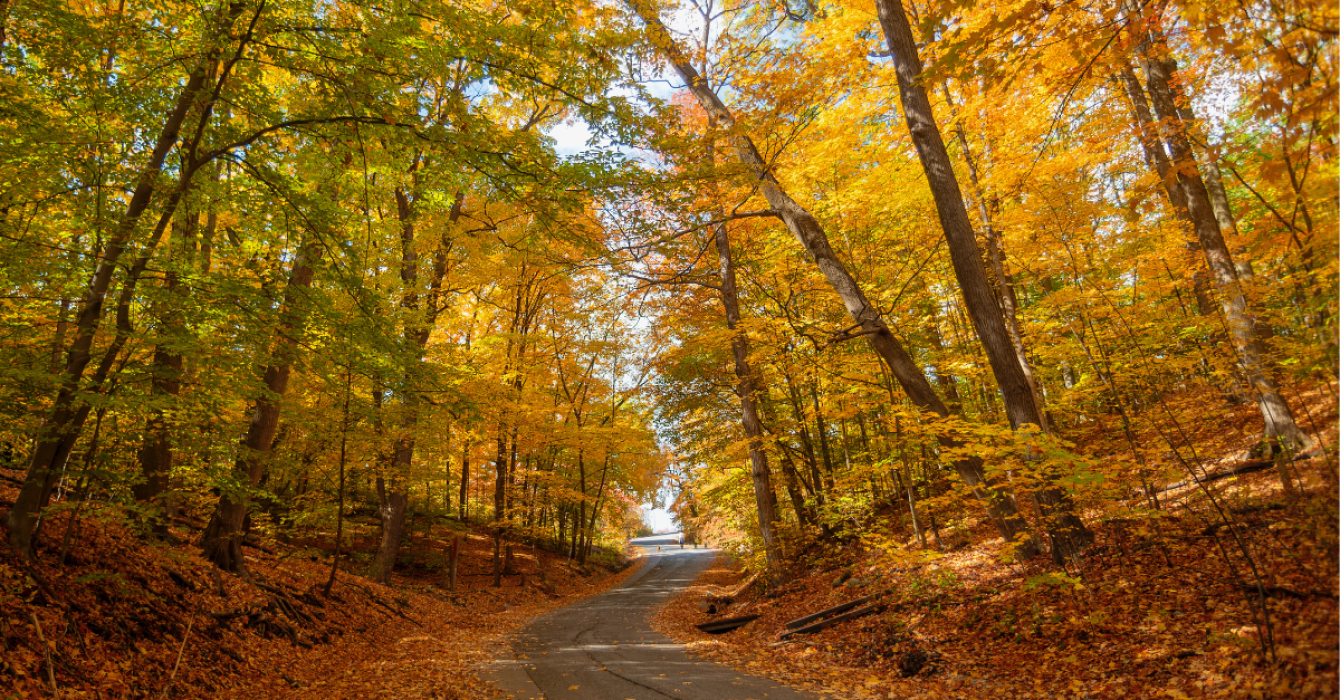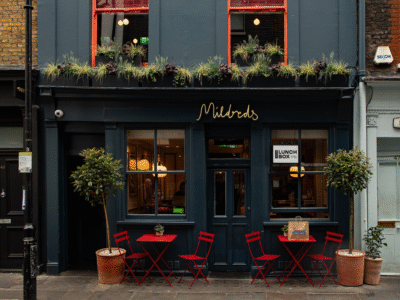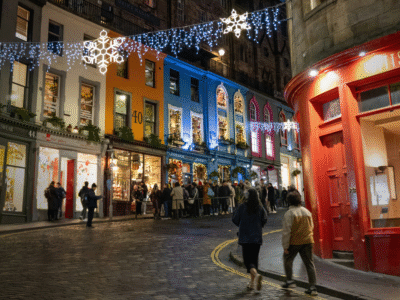As autumn sweeps across the UK, it’s time to get your walking boots on.
Besides the chunky knits, steaming mugs of hot chocolate and that unmistakable chill in the air, one of autumn’s highlights is watching the tree leaves transform from green to a blaze of orange, auburn, yellow and red.
Yet in London, with the hustle of work and commuting, it can feel like these changes are passing you by. To truly soak in autumn’s splendour, a trip beyond the city’s sprawl might be in order.
To pinpoint the best spots, travel experts Hot Tub Hideaways used digital colour analysis and Google satellite images to identify the areas with the highest concentration of leaf colour variations in the UK.
From expansive national parks to serene leafy forests, these are the top 10 best destinations for walks that showcase stunning displays of autumn colours.
The Forest of Dean, Gloucestershire
Unique autumn colour variations: 378,241
With the highest count of unique autumn colours, the Forest of Dean in Gloucestershire is the UK’s top spot for a colourful autumn walk, according to Hot Tub Hideaways’ research. Once a medieval royal hunting ground and a key source of timber for Tudor warships, it’s now the second-largest crown forest in England after the New Forest.
Designated as the first ever National Forest Park in 1938, the 27,000-acre Forest of Dean is a popular destination for nature-lovers, and its large areas of preserved woodland are home to wildlife like deer, boar and birds. The forest is also home to Europe’s largest colonies of greater and lesser horseshoe bats — perfect for a Halloween adventure.

Read more: ‘I tried walking yoga for two weeks and it changed my definition of mindfulness’
Richmond Park, London
Unique autumn colour variations: 322,874
Coming in a close second and a convenient choice for Londoners is Richmond Park, on the edge of southwest London. The largest of London’s Royal Parks, it was originally used as a deer park by Charles I in the 17th century. Now, its famously stunning and well-kept landscapes have served as the backdrop for many films and TV programmes.
Richmond Park is a National Nature Reserve and Site of Special Scientific Interest, and visitors often encounter groups of red and fallow deer roaming its 2,500 acres, along with bats, butterflies and birds.
With two cafes and several drinks and snack kiosks, it’s the perfect spot for an autumn walk without venturing far from the city. Plus, it’s easily accessible via the overground.
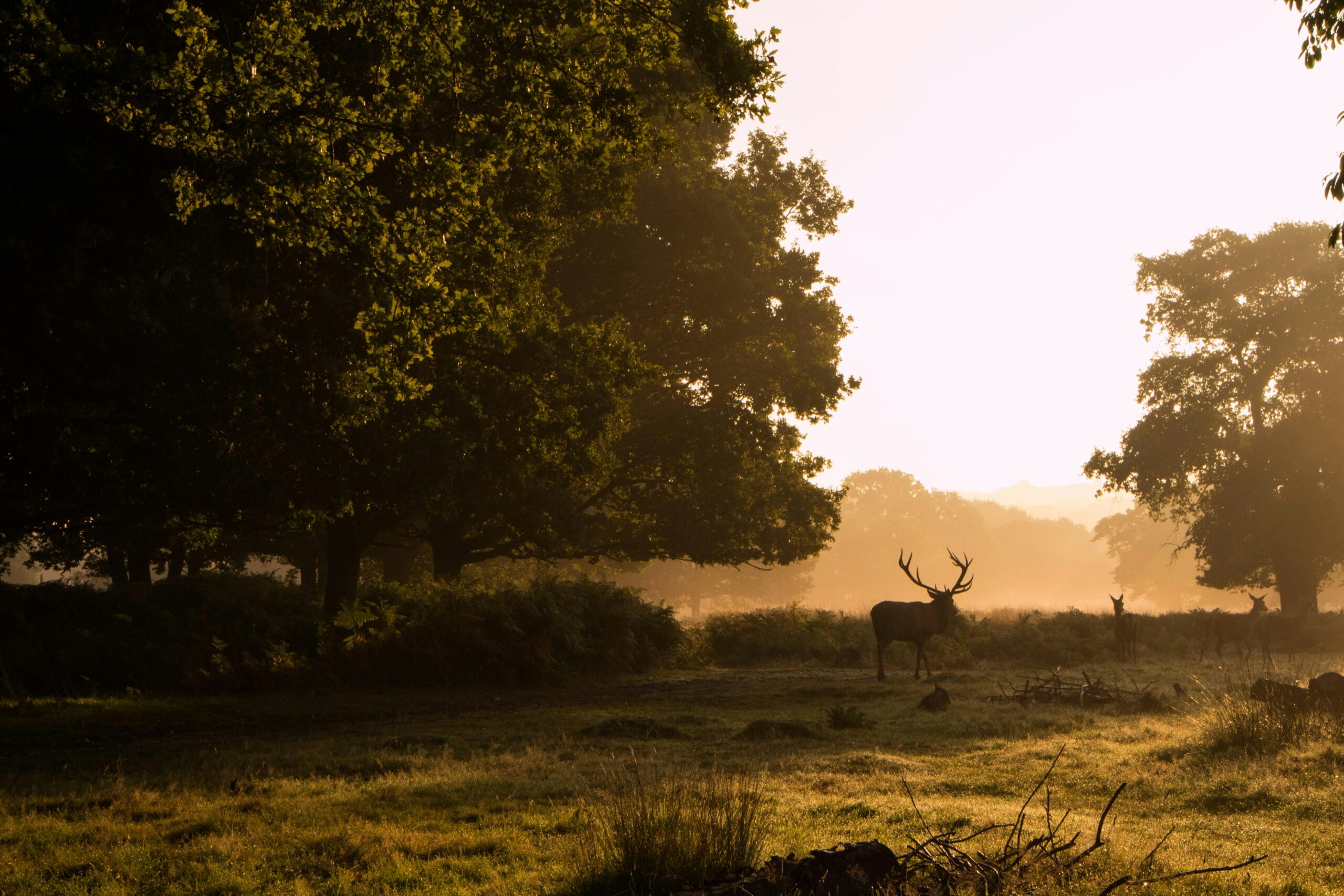
Read more: 7 best London gardens, parks and green spaces to visit
Delamere Forest, Cheshire
Unique autumn colour variations: 218,789
Delamere Forest, the largest woodland in Cheshire and a remnant of the ancient forests of Mara and Mondrem, spans 2,400 acres near the village of Delamere.
Once the hunting grounds of the Norman Earls of Chester, it’s now managed by Forestry England and features a distinct mix of deciduous and evergreen trees and notable sites to explore like Old Pale hill, Blakemere Moss and Black Lake.
The forest is especially beautiful in late September and early October, and whether you’re walking, cycling or even horse-riding, its many trails offer a picturesque autumn escape.

Read more: ‘I’m walking straighter, feeling toned and smiling more — here’s what happened when I upped my step count to 20,000 a day’
Dalby Forest, North Yorkshire
Unique autumn colour variations: 183,253
If you live in the south and don’t mind travelling north for your crisp autumn escape, Dalby Forest is your spot. Located on the southern slopes of the North York Moors National Park in North Yorkshire, it offers 8,500 acres of walking and cycling rails, stargazing spots and sculptures.
Part of the North Riding Forest Park and maintained by Forestry England, the forest is home to a menagerie of diverse wildlife, including badgers, roe deer, nightjars and five different species of bat.
With a rich mix of medley of trees such as oak, beech and sitka spruce, the forest promises a stunning array of vibrant colours that perfectly capture the beauty of the changing season.

Epping Forest, Essex
Unique autumn colour variations: 178,768
Epping Forest is a 6,000-acre ancient woodland straddling Greater London and Essex. Stretching from Epping to Chingford, it forms a green corridor into east London. The largest forest in the capital, it’s home to many rare and vital habitats, including ancient semi-natural woodland, wood pasture, old grassland plains, heathlands and wetlands.
Explore the bright hues of nearly 55,000 veteran pollarded trees (which have been cut off at the top to encourage growth), the highest concentration in the UK. A wildlife haven, the forest is a great spot for observing bugs, bats, birds, reptiles, butterflies and an impressive display of 1,500 fungi species — making your woodland strolls even more enchanting.

New Forest National Park, Hampshire
Unique autumn colour variations: 174,205
Covering an extraordinary 140,000 acres, New Forest National Park in Hampshire is one of southern England’s largest areas of open pastureland, heathland and forest.
Established as a royal forest by William the Conqueror and historically a timber source for Royal Navy ships, the forest is now a protected area of ecological significance.
Choose from over 130 walking routes to explore the surrounding forest, home to a variety of rare birds and mammals including ponies, the lesser-spotted woodpecker, honey buzzards, deer, bats and even snakes.

Sherwood Forest Country Park, Nottinghamshire
Unique autumn colour variations: 169,100
Home of the legend of Robin Hood, Sherwood Forest is the place for anyone looking to add a touch of fairytale magic to their walk. Once an ancient royal forest dating back to the last glacial period, it’s now a National Nature Reserve.
After the Norman Conquest, it became a royal hunting ground frequented by English kings. Though much of the forest was eventually sold into private ownership, there’s still plenty of lush woodland to enjoy.
From walking and cycling to horse-riding and golfing, there’s plenty of ways to explore, and it’s a wonderful place to bring the stories of Robin Hood to life — especially if you’re visiting with little ones.
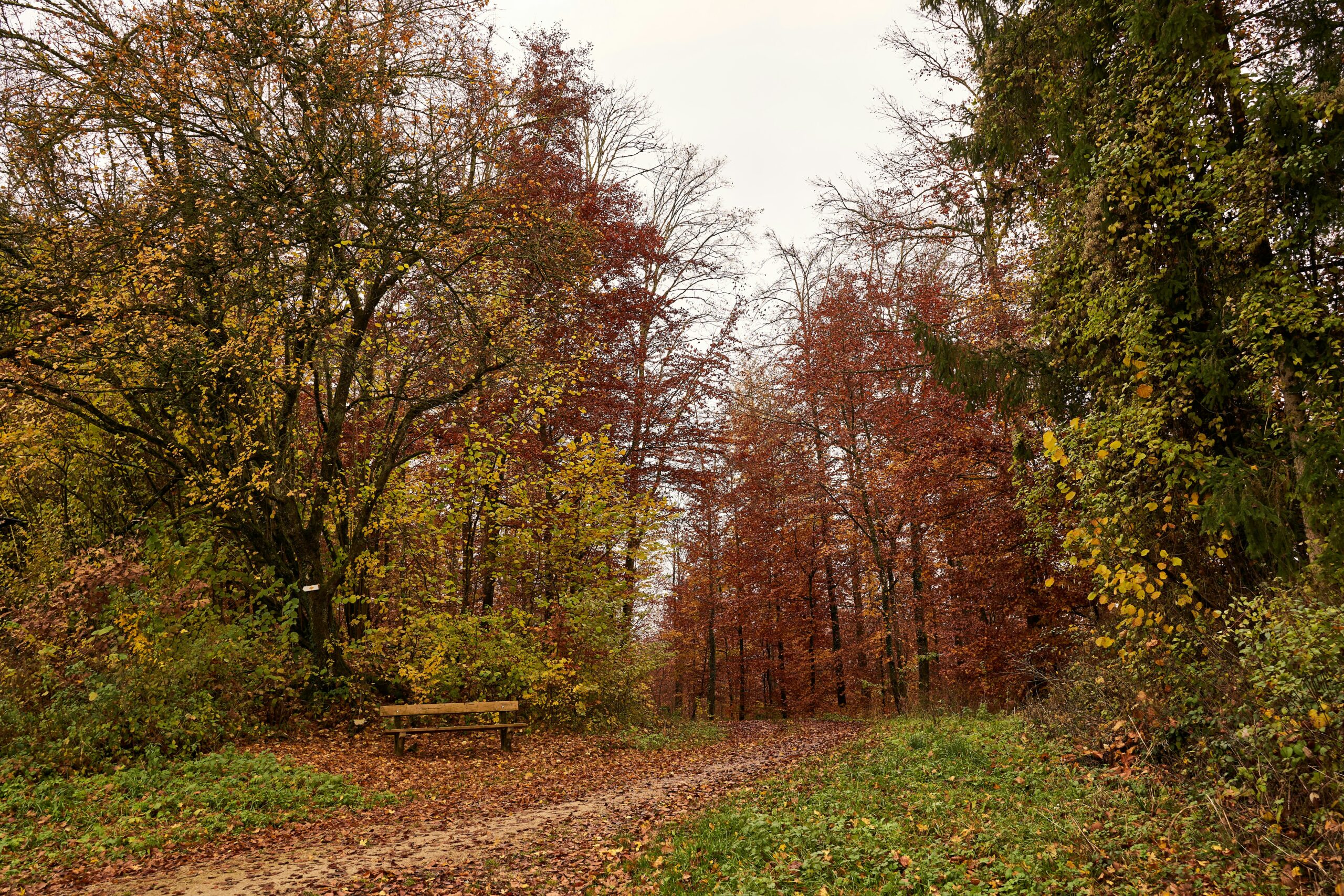
Thetford Forest, Norfolk
Unique autumn colour variations: 166,661
Thetford Forest, Britain’s largest lowland pine forest, stretches across northern Suffolk and southern Norfolk.
Originally planted after the First World War to replenish timber reserves, the forest replaced much of the man-made Breckland environment (dry environment) and is now managed by Forestry England. It’s also home to Grime’s Graves, a prehistoric flint mining site.
While pine trees dominate the landscape and remain evergreen, the forest is interspersed with a patchwork of broadleaf trees, offering a beautiful display of autumn colours to enjoy during your walk.
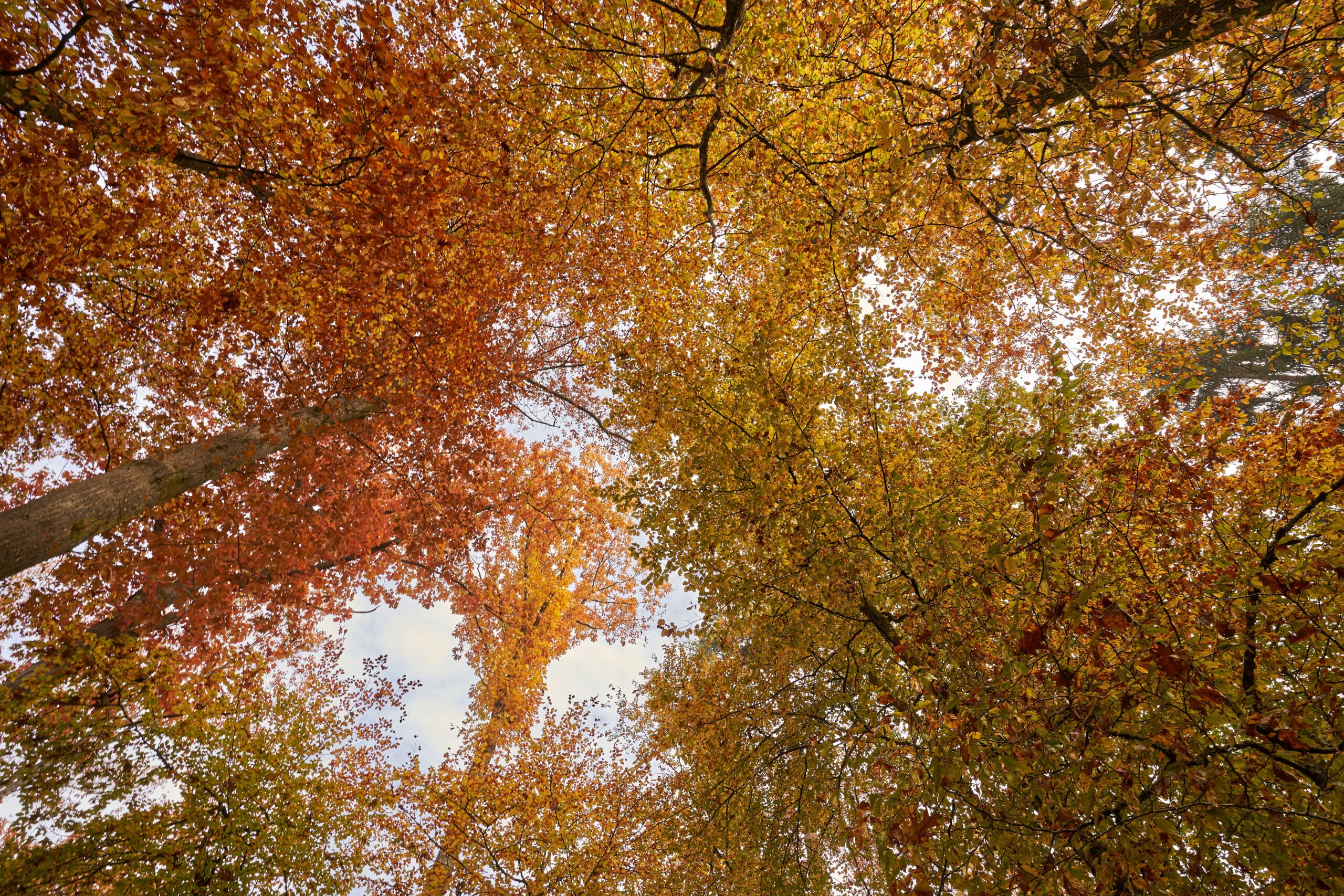
Gwydir Forest Park, Conway
Unique autumn colour variations: 157,538
Gwydir Forest Park is located in the heart of Eryri (Snowdonia) National Park in north Wales. It surrounds the village of Betws-y-Coed and is the perfect hiking start point.
Once dominated by lead and zinc mining, the area now features trails, old miners’ paths and cycle routes. Some of these paths are less frequented, offering a peaceful way to immerse yourself in the atmosphere of Welsh myths and legends.
There’s also the option to extend your trip to explore the nearby peaks and coastline, taking in the rich history and natural beauty of the region.

Grizedale Forest, Cumbria
Unique autumn colour variations: 147,486
Finally, Grizedale Forest is a World Heritage Site in the Lake District, located in northwest England. It sits east of Coniston Water and south of Hawkshead.
Historically part of Lancashire, Grizedale is home to the last native herd of red deer. Visitors can also spot roe deer, buzzards, barn owls and red kites.
Managed by Forestry England, Grizedale Forest offers many footpaths with colour-coded markers for different skill levels, mountain biking trails and even an aerial activity course for those seeking adventure. For art enthusiasts, the Silurian Way sculpture trail showcases a range of artworks set against the stunning forest backdrop.
Feature credit: Freepik

